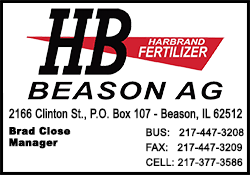|
 Snip a few leaves or leaf-covered stems as needed.
For the same intensity of flavor, you generally need two to three
times more fresh herbs than dried except for Rosemary which has an
equally strong flavor fresh or dried. So, if the recipe calls for
one teaspoon of dried parsley use one Tablespoon (3 teaspoons) of
fresh parsley leaves. Snip a few leaves or leaf-covered stems as needed.
For the same intensity of flavor, you generally need two to three
times more fresh herbs than dried except for Rosemary which has an
equally strong flavor fresh or dried. So, if the recipe calls for
one teaspoon of dried parsley use one Tablespoon (3 teaspoons) of
fresh parsley leaves.
Continue harvesting herbs as needed throughout the growing season.
And don’t worry about harming the plant because regular harvesting
encourages new growth which means more for you to harvest. Just be
sure to leave enough of the leaves intact to maintain plant growth.
You can remove as much as fifty percent of the leaves from
established annual herb plants. This is about when the plants near
their final height. You can remove up to one third from established
perennial plants that have been in the garden for several months or
more. Harvest when the plant has formed buds, but before they open
into flowers for the greatest concentration of flavor. This is the
perfect time to harvest herbs you plan to preserve.
Use a pair of garden scissors or bypass pruners for faster and
easier harvesting. Make your cuts above a set of healthy leaves to
keep the plants looking good. Then, preserve the flavor and zest of
herbs with proper storage and preservation.
Store thin leafy herbs like parsley and cilantro for up to a week in
the refrigerator. Place the stems in a jar of water, like a flower
arrangement, and loosely cover with a plastic bag. Keep basil out of
the fridge to avoid discoloration and others on the counter for
quick and frequent use.
Wrap dry thicker-leafed herbs like sage and thyme in a paper towel,
set inside a plastic bag and place in a warmer section of the
refrigerator.

[to top of second column] |

Freeze sprigs, whole leaves or chopped clean herbs on
a cookie sheet. Or pack clean diced herbs in ice cube trays and fill
the empty spaces with water. These are great for use in soups and
stews. Store the frozen herbs and ice cubes in an airtight container
or baggie in the freezer.
Or bundle several stems together, secure with a rubber band and use
a spring type clothespin to hang them in a warm, dry place to dry
out. Make your own drying rack from an old embroidery hoop, string,
and S hooks.
Get creative and use some of your herbs to make a fragrant edible
wreath. Use fresh herbs that are flexible and easier to shape into a
wreath. They will dry in place and can be harvested as needed.
Speed up the drying process in the microwave. Place herbs on a paper
towel-covered paper plate. Start with one to two minutes on high.
Repeat for 30 seconds as needed until the herbs are brittle.

Store dried herbs in an airtight plastic or glass jar.
Keep enjoying these fresh-from-the-garden flavors throughout the
remainder of the season. And consider preserving a few for you, your
family, and friends to enjoy throughout the winter.
Melinda Myers has written more than 20 gardening books, including
the recently released Midwest Gardener’s Handbook, 2nd Edition and
Small Space Gardening. She hosts The Great Courses “How to Grow
Anything” DVD instant video series and the nationally syndicated
Melinda’s Garden Moment TV & radio program. Myers is a columnist and
contributing editor for Birds & Blooms magazine and her website is
www.MelindaMyers.com.
[Photo courtesy of MelindaMyers.com] |